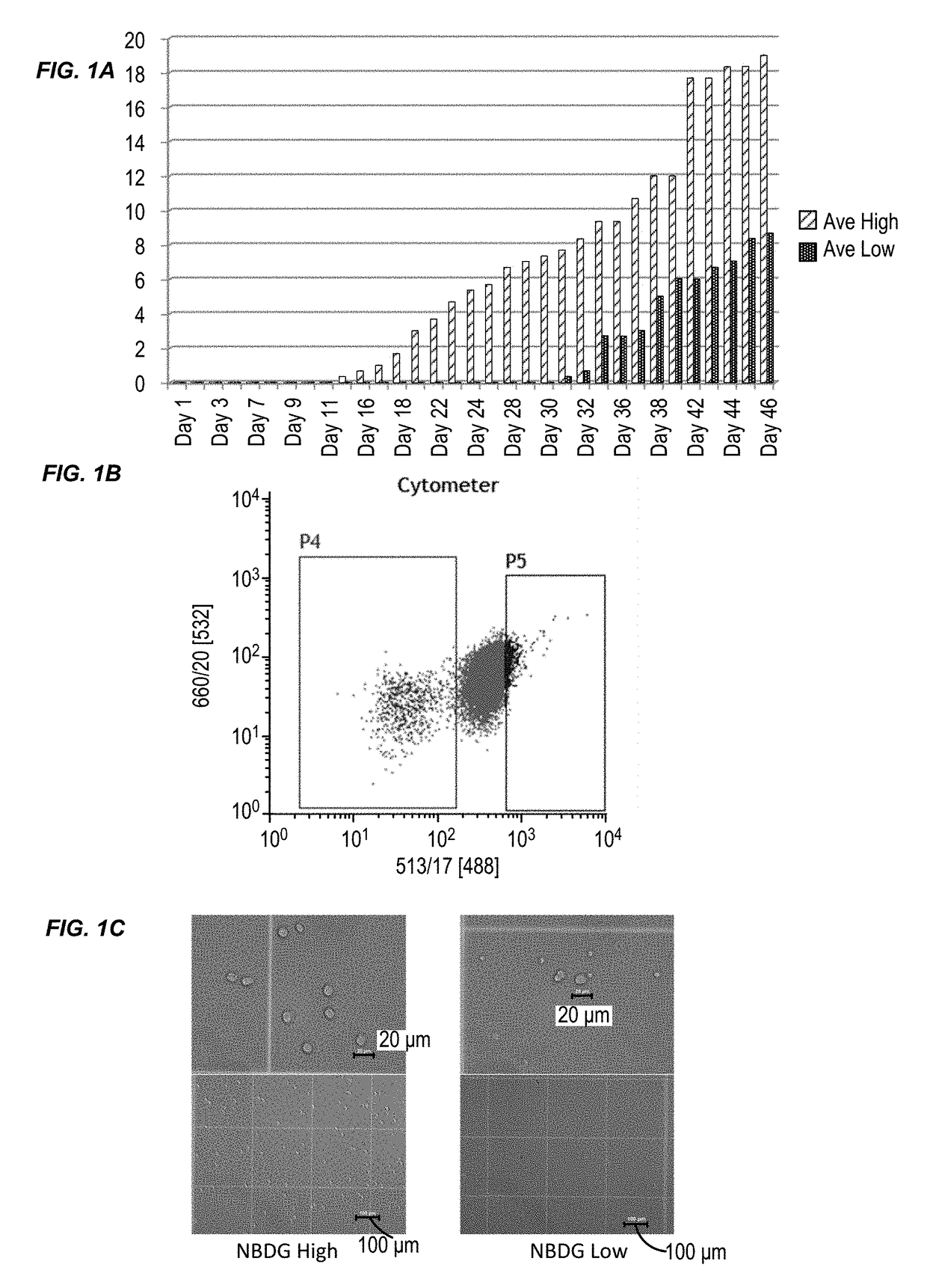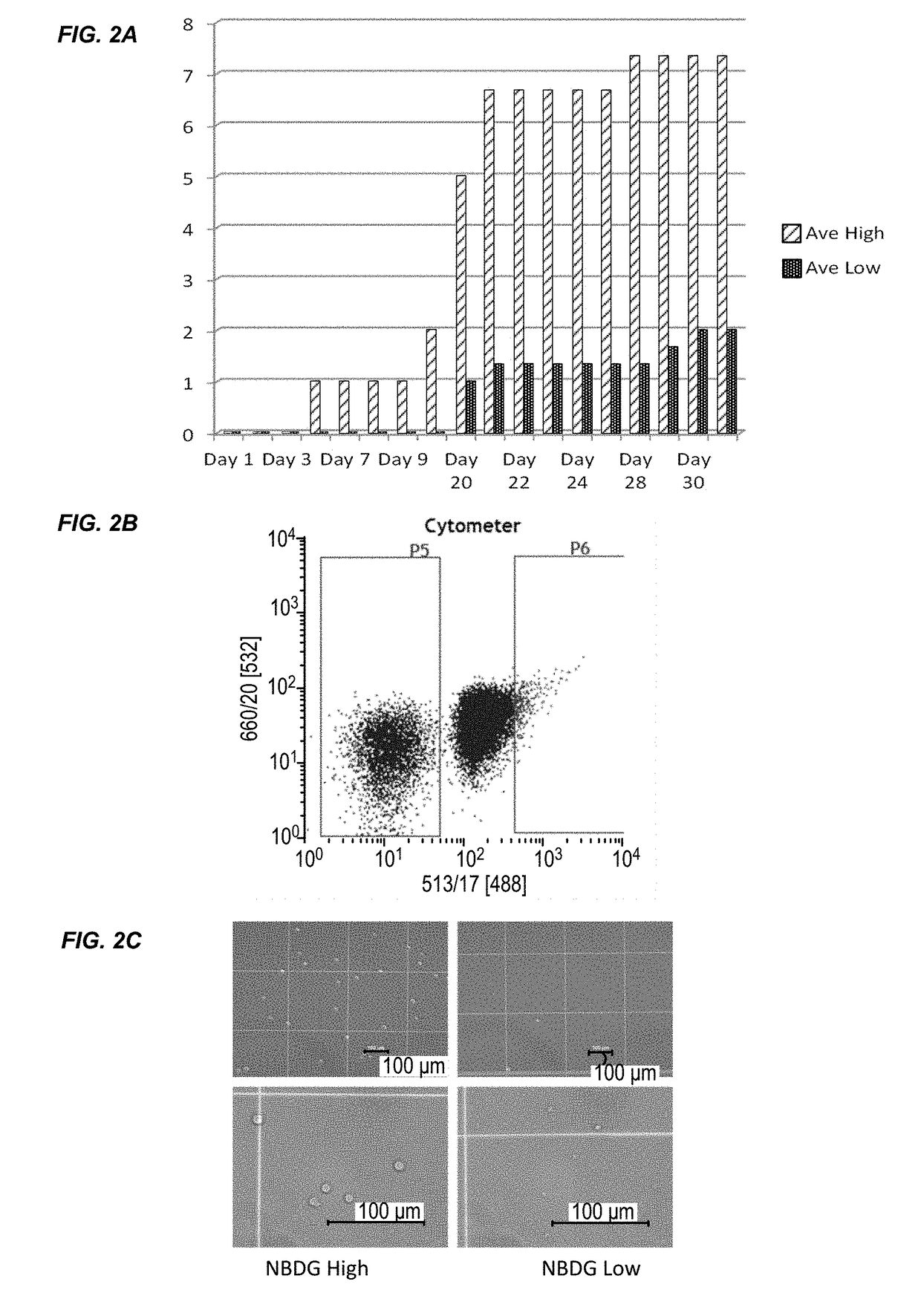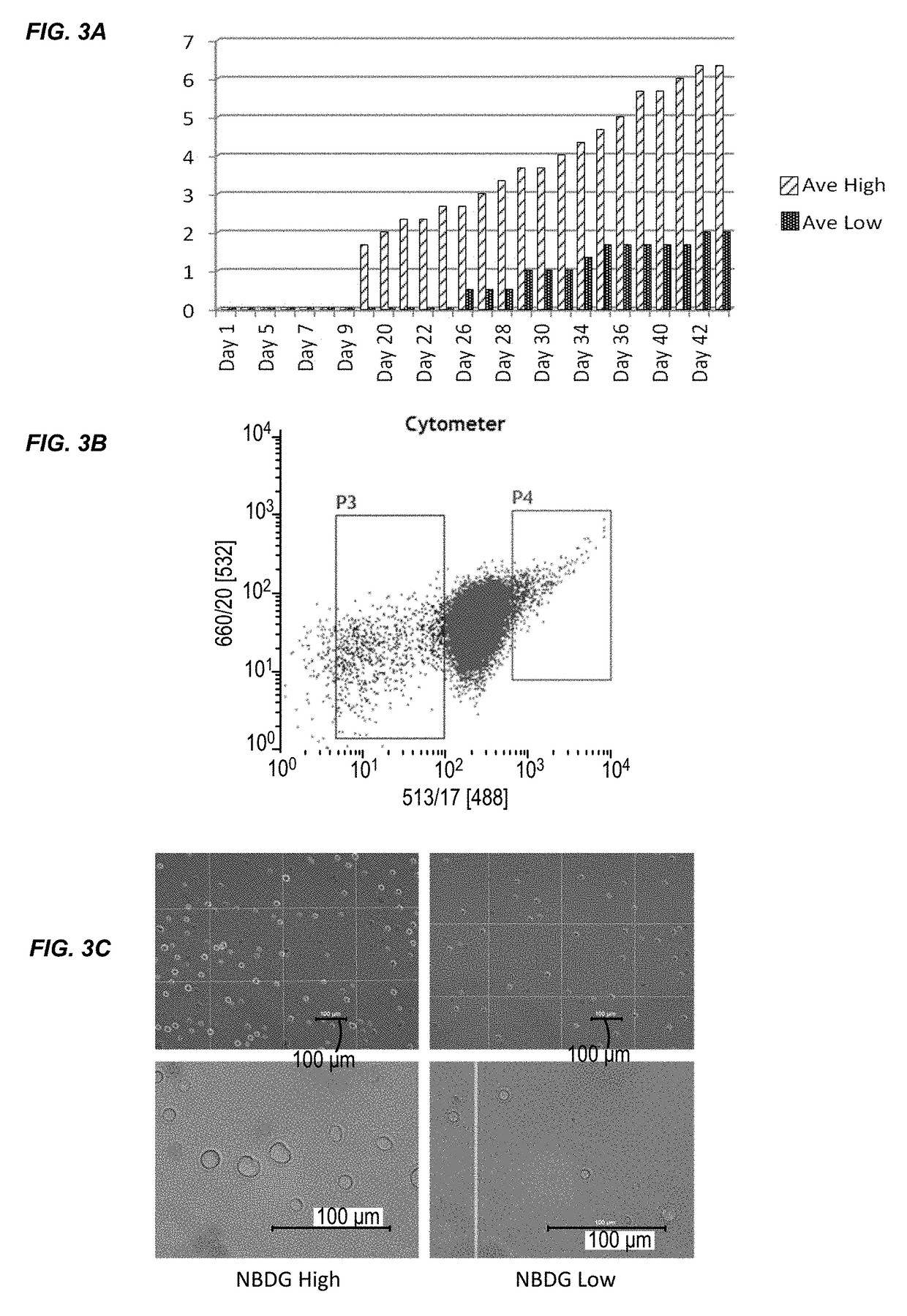Methods of selecting and isolating cancer stem cells
a cancer stem cell and stem cell technology, applied in the field of cancer stem cell selection and isolating, can solve the problems of phenotypical heterogeneity and relatively unstable cscs, and achieve the effect of lowering the fluorescence level
- Summary
- Abstract
- Description
- Claims
- Application Information
AI Technical Summary
Benefits of technology
Problems solved by technology
Method used
Image
Examples
example 1
Stem Cells (LSCs) in Acute Lymphoblastic Leukemia (ALL): Unveiling Hierarchical Structure at Single Cell Resolution
[0132]This example illustrates a novel method to isolate ALL LSCs based on their cellular metabolic activity. This example also shows that these isolated LSCs have in vivo leukemia-initiating capability (LIC). This example also describes a series of primary ALL xenograft mouse models generated from ALL patient samples and NOD / SCID / IL2Rγ− / − (NSG) mice.
[0133]Leukemia cells harvested from several generations of these mice were used in this study. LSCs and non-LSCs were isolated from 4 different B-cell type ALL samples and transplanted separately into healthy NSG mice. Cell numbers used varied between 5,000; 10,000; and 50,000 per mouse, and the number of the animals varied between three and eight per group. All the animals transplanted with LSCs developed leukemia between 5-14 weeks, whereas those transplanted with non-LSCs did not develop the disease within the same timef...
example 2
Stem Cells (LSCs) in B-Cell Acute Lymphoblastic Leukemia (B-Cell ALL)
[0178]This example describes the results of a genome-wide microarray gene expression profiling of RNA isolated from the JM1 cell line. The experimental procedures are described in Example 1. Briefly, JM1 cells were treated with NBDG and FACS sorted to isolate two cell populations: a low NBDG group and a high NBDG group. The cells of each group were subject to transcriptome analysis using a gene expression microarray (SurePrint® G3 Human Gene Expression 8×60K v2 Microarray, Agilent Technologies). The data is provided in Table 3. There was an average fold change of ≧1.5 between the groups (i.e., low NBDG vs. high NBDG) with paired t-test results of p≦0.05. 80 genes exhibited a differential expression level between B-cell ALL stem cells and non-B-cell ALL stem cells. The expression level difference for each of the 80 genes was statistically significant.
example 3
Stem Cells (LSCs) in T-Cell Acute Lymphoblastic Leukemia (T-Cell ALL)
[0179]This example describes the results of a genome-wide microarray gene expression profiling of RNA isolated from the Molt4 cell line. The experimental procedures are described in Example 1. Briefly, Molt4 cells were treated with NBDG and FACS sorted to isolate two cell populations: a low NBDG group and a high NBDG group. The cells of each group were subject to transcriptome analysis using a gene expression microarray (SurePrint® G3 Human Gene Expression 8×60K v2 Microarray, Agilent Technologies). The data is provided in Table 4. There was an average fold change of ≧1.5 between the groups (i.e., low NBDG vs. high NBDG) with paired t-test results of p≦0.05. 105 genes exhibited a differential expression level between T-cell ALL stem cells and non-T-cell ALL stem cells. The expression level difference for each of the 105 genes was statistically significant.
PUM
| Property | Measurement | Unit |
|---|---|---|
| pH | aaaaa | aaaaa |
| temperature | aaaaa | aaaaa |
| size | aaaaa | aaaaa |
Abstract
Description
Claims
Application Information
 Login to View More
Login to View More - R&D
- Intellectual Property
- Life Sciences
- Materials
- Tech Scout
- Unparalleled Data Quality
- Higher Quality Content
- 60% Fewer Hallucinations
Browse by: Latest US Patents, China's latest patents, Technical Efficacy Thesaurus, Application Domain, Technology Topic, Popular Technical Reports.
© 2025 PatSnap. All rights reserved.Legal|Privacy policy|Modern Slavery Act Transparency Statement|Sitemap|About US| Contact US: help@patsnap.com



